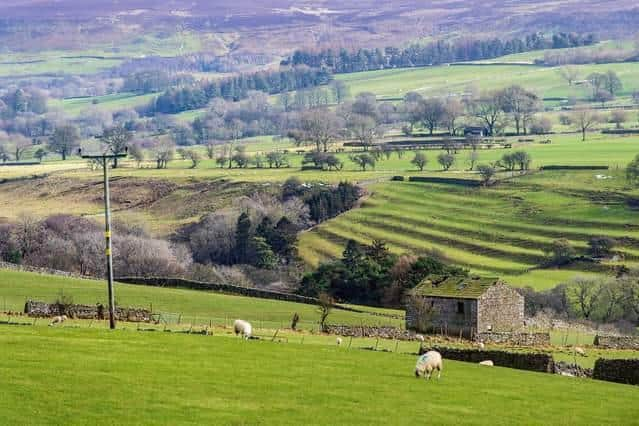'Wolves and lynx will not roam the Yorkshire Dales' under nature recovery plan
A meeting of the Yorkshire Dales National Park Authority heard while agreeing an ecological plan was important as government and private funding available to farmers and landowners in the Dales was likely to be tied to environmental issues, a consensus had yet to be agreed between interest groups on several issues, such as the amount of trees which should be planted in the park.
Senior officers said it would not be possible to reach a resolution over all areas of contention, but as fresh government environmental policies were expected the strategy would not be finalised before June next year.
Advertisement
Hide AdAdvertisement
Hide AdThe strategy is being developed after studies identified how the park has significant areas of 17 different habitats and more than 100 different species that are UK priorities and have been facing national declines.


It also follows a commitment by interest groups in the park to making “the Yorkshire Dales home to the finest variety of wildlife in England”.
The park’s nationally important wildlife populations include black grouse, rare plants such as bird’s-eye primrose, globeflower and baneberry, scarce invertebrates such as the northern brown argus butterfly and mammals, such as the red squirrel.
It is hoped the strategy will help create networks for the park’s abundant wildlife to increase biodiversity in its surrounding areas.
Advertisement
Hide AdAdvertisement
Hide AdThe draft strategy proposes what officers have described as a “relatively modest” increase in the proportion of the park covered by native woodland from 4.5 per cent to seven per cent alongside creating nature recovery areas across 15 per cent of the park.
Although both targets have been criticised as insufficently ambitious by some, several members raised concerns over calls to radically change the management of land, and in particular burning of the heather moorland to encourage regrowth and habitats for grouse, following proposals to phase it out.
Environmentalists have cited how a University of Leeds study concluded burning grouse moors degrades peatland habitat, releases climate-altering gases, reduces biodiversity and increases flood risk.
However, Wensleydale farmer Allen Kirkbride told the meeting long heather caused “chaos for square miles” when it caught fire. He said: “The idea of not burning heather is ludicrous.”
Advertisement
Hide AdAdvertisement
Hide AdThe authority’s outgoing member champion for the environment, Ian McPherson, said it faced a challenge in deciding how much of the national park should be set aside for nature recovery areas.
He said: “What we are trying to do is get a good balance between the needs of environmentalists, farmers and land managers.”
Mr McPherson said while the possibility of reintroducing some native species to the area was being considered as part of the strategy it would not see “wolves and lynx and so on roaming the Yorkshire Dales”, but instead seek to raise awareness some species were at a low ebb.

